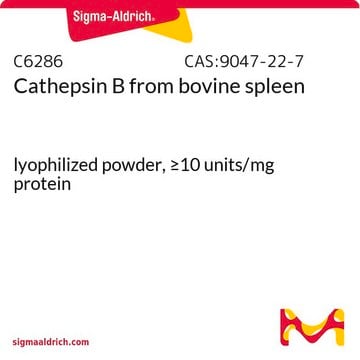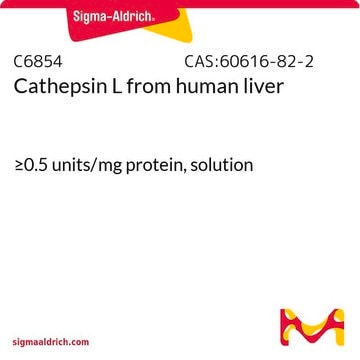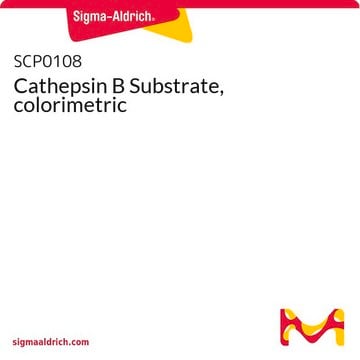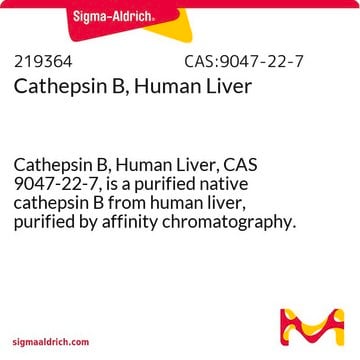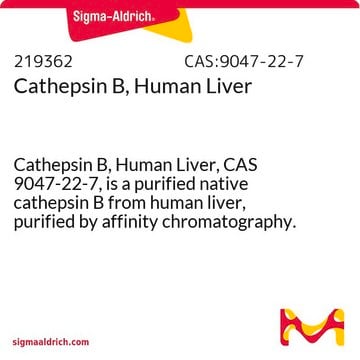C0150
Cathepsin B from human placenta
lyophilized powder, ≥5 units/mg protein
Sinónimos:
Cathepsin B1
About This Item
Productos recomendados
form
lyophilized powder
specific activity
≥5 units/mg protein
mol wt
24.5 kDa
composition
Protein, ~50% Lowry
solubility
H2O: soluble 1.0 mg/mL, clear
UniProt accession no.
storage temp.
−20°C
Gene Information
human ... CTSB(1508)
Categorías relacionadas
General description
Application
Biochem/physiol Actions
Unit Definition
Physical form
Preparation Note
inhibitor
Storage Class
11 - Combustible Solids
wgk_germany
WGK 3
flash_point_f
Not applicable
flash_point_c
Not applicable
Certificados de análisis (COA)
Busque Certificados de análisis (COA) introduciendo el número de lote del producto. Los números de lote se encuentran en la etiqueta del producto después de las palabras «Lot» o «Batch»
¿Ya tiene este producto?
Encuentre la documentación para los productos que ha comprado recientemente en la Biblioteca de documentos.
Los clientes también vieron
Artículos
Cathepsin B is a lysosomal cysteine proteinase with broad specificity. This protocol uses Nα–CBZ–Arg–Arg–7–amido–4–methylcoumarin as the substrate for fluorometric detection of Cathepsin B activity.
Nuestro equipo de científicos tiene experiencia en todas las áreas de investigación: Ciencias de la vida, Ciencia de los materiales, Síntesis química, Cromatografía, Analítica y muchas otras.
Póngase en contacto con el Servicio técnico